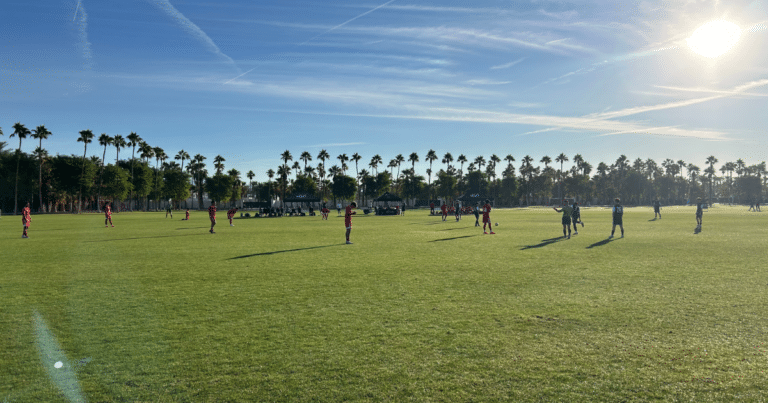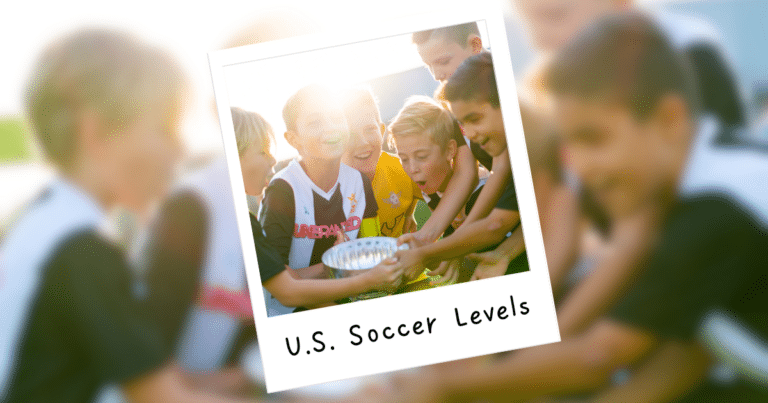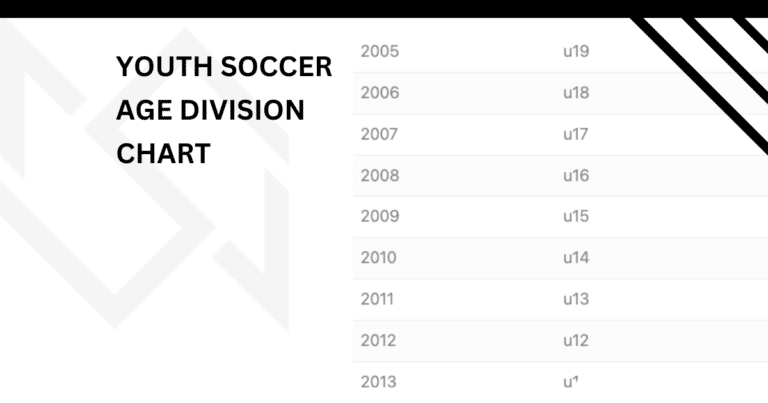How Many Miles Do Soccer Players Run in a Game?
On average, soccer players run about 7 miles during a 90-minute game. But, there’s more to it than that including the age and position of the player. We’ll address it all in this article.
Key Takeaways From This Article:
- The average professional soccer player runs 7 miles in 90 minutes.
- The average youth soccer player will run about 4-5 miles in an 80-minute game.
- The distance is determined by age, length of game, amount they are in, and position.
- Players can see how many miles they run with a GPS tracker specifically for soccer.
A player’s distance is usually a good reflection of their work rate. Players who run more, tend to be on the ball more. This isn’t always the case but I often see a correlation.

In this article, we’ll break it down by position and provide some tips on how you can build more stamina and speed.
How Far Does the Average Player Run?
On average, a player will cover approximately seven miles per match. This includes a combination of sprinting, running, jogging, and walking.
| Position | Distance Covered |
|---|---|
| Goalkeeper | 0.5-1.5 miles |
| Defenders | 5-7 miles |
| Midfielders | 7-8 miles |
| Strikers | 4-5 miles |
The distance that a soccer player covers is typically based on the field size and their position. For example, there is a big difference between what a midfielder covers on the field compared to the goalkeeper.
There’s also a major difference between the distance covered on an 11v11 and a 9v9 field.
Let’s take a look at the average distance by each position.
How Far Does a Striker Run?
On average, strikers (or forwards) will run around 4-5 miles per game.
The distance they cover will be determined by the style of play during the match. For example, the striker will run less if the opposing team is always on the attack.
How Far Does a Midfielder Run?
In many cases, the team’s midfielders will have run the most during a game. They typically run 7-8 miles over 90 minutes.
How Far Does a Defender Run?
Defenders usually travel 5-7 miles per game.
The range accounts for a coach’s match tactics. Some coaches will want their backs to extend up the sideline and attack.
While a defensive-minded coach will want four across to defend the opposing team from scoring.
How Far Does a Goalkeeper Run?
It’s no surprise that the goalkeepers run the least.
During a single game, keepers typically run around .5-1.5 miles.
Professional Players vs Youth Players

As you guessed, professional players usually run more than youth soccer players.
In youth soccer, there’s a wide difference in distance covered per game.
For example, youth players who play in recreational leagues may only run 1 to 2 miles per game, while those who play at a higher level may run up to 4 or 5 miles per game.
Now that my son wears a STATsports vest, I can confirm that he runs about 6 miles per game but I’ve also seen 7.8 miles!
Fastest Soccer Players in the World
When it comes to pure speed, some professional soccer players sit at the top of the list.
If you research this, you’ll find conflicting information but here are the European soccer players who are constantly at the top (in no particular order):
- Kylian Mbappe
- Erling Haaland
- Mohamed Salah
- Adama Traore
- Alphonso Davies
- Ousmane Dembele
The fastest soccer players run about 22 miles per hour. In comparison, for American football fans, Tyreek Hill was clocked at 23 miles per hour in a regular season game.
Is the Amount of Running in Soccer Important?

Solely focusing on the distance doesn’t show the entire picture. It can be deceiving when evaluating a player’s impact.
I’ve witnessed players who run five miles in a game but only get to the ball a few times. These players will casually run because they have to. They aren’t running with a purpose.
I would rather see a youth player run three impactful miles than someone who logs five casual miles. The quality of play favors the player who ran less.
Related: Why Does Messi Walk in Games
I love how more youth soccer clubs and coaches are requiring players to wear GPS trackers. I think the data is beneficial but they should always factor in qualitative data as well.
Final Thoughts
I hope this breakdown was informative. To summarize, the average soccer player runs about seven miles and is broken down by position:
- Goalkeeper: 0.5-1.5 miles
- Defenders: 5-7 miles
- Midfielders: 7-8 miles
- Strikers: 4-5 miles
This is for an 11v11 field in a 90-minute game.
As a soccer player, it is important to keep working on your stamina and speed. Soccer skills are critical but when you couple it with bodywork, you accelerate your path!
Frequently Asked Questions
According to some sources, Ronaldo runs about 6 miles per game.
Soccer is up there but not the most. On average, field hockey is!
Refs typically run between 6-8 miles per 90 minutes so they run more than many players.

Written By: Beau Bridges
Beau is the founder of SoccerNovo, dedicated to helping players and parents navigate the youth soccer landscape. As a former youth coach and soccer parent, he shares insights on player development, recruiting, and the ever-evolving soccer scene in the U.S.
Let’s connect




